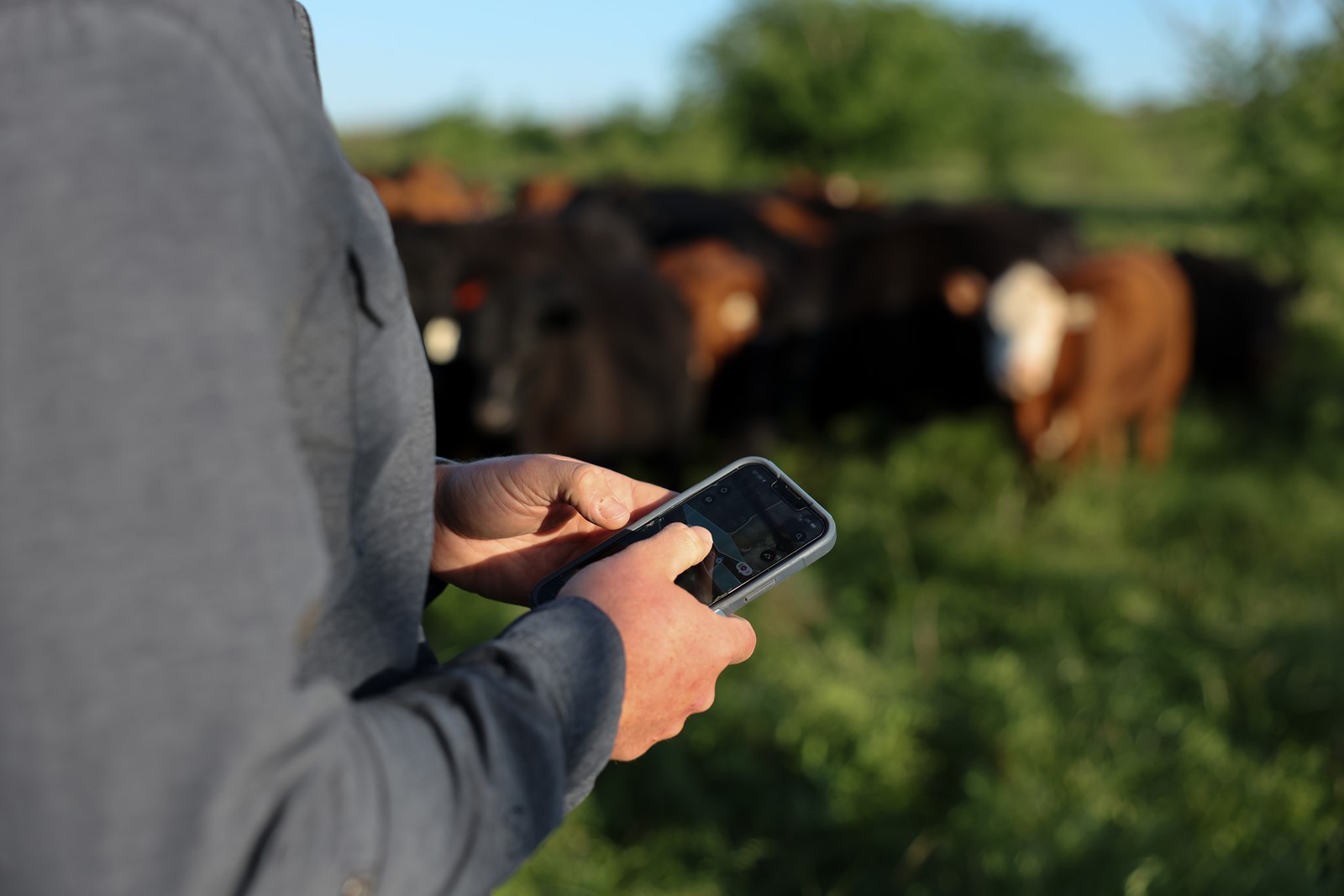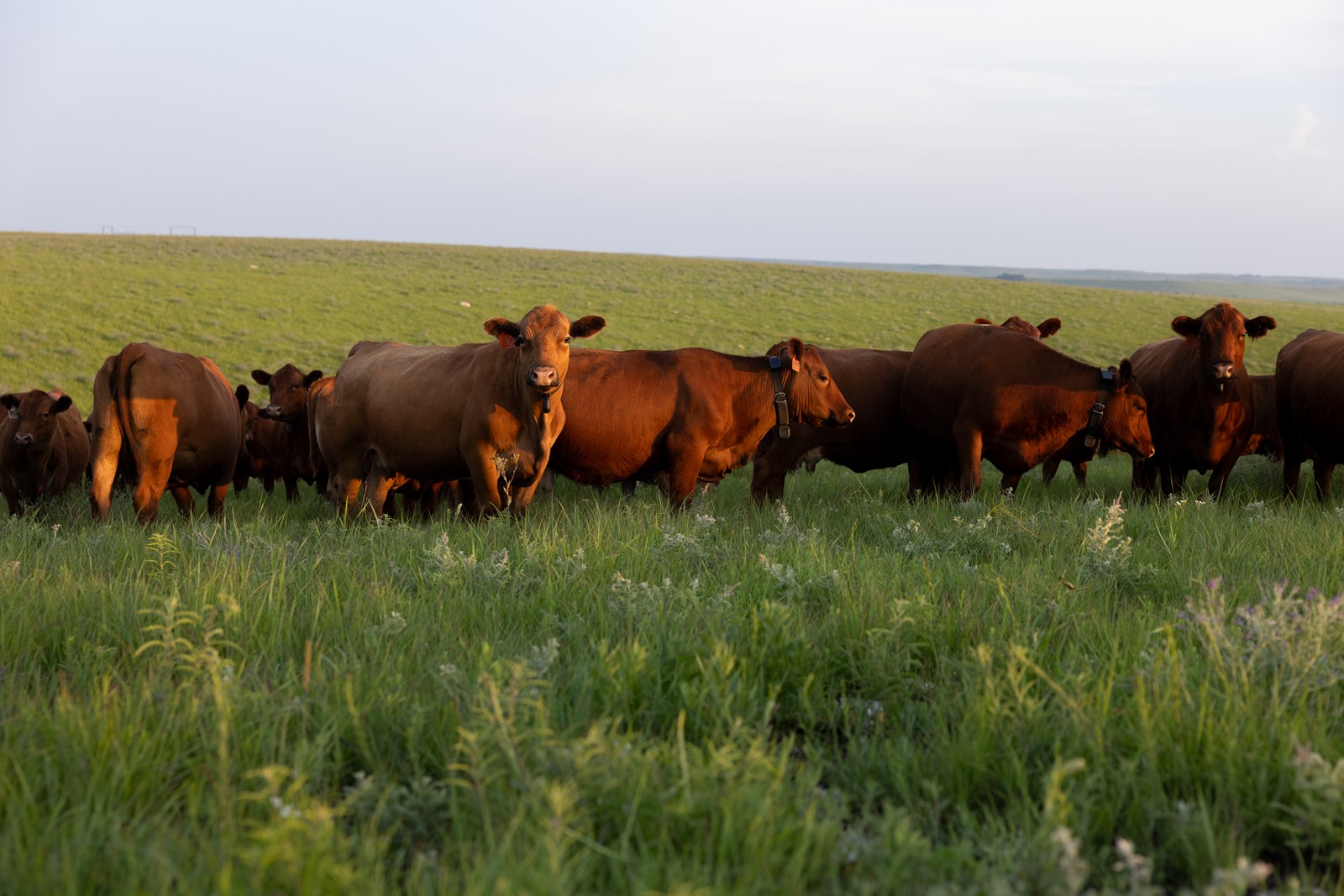

BOULDER >> Halter, the New Zealand ag-tech company behind a fenceless system to help cattle ranchers manage their herds, has a new home on the Front Range not far from where the University of Colorado Buffaloes roam.
The company, which boasts a $1 billion valuation after its recent $100 million Series D fundraising round, has established its North American headquarters in Boulder.
Halter’s system, which has been in development for nearly a decade and hit the market late last year, uses “hardware that goes onto a cow — a soft collar that uses a variety of cues to guide and contain that cow in a certain area, all from your mobile phone,” Halter’s United States country manager Justin Wells told BizWest. “You can use (the collar, app transmission platform) to mimic the same thing you’re doing with physical fencing to contain a cow in an area, and then you can go and move that cow to a new area.”
While the concept of invisible fencing is likely familiar to many pet owners, “we try not to associate (Halter’s system) with a dog collar,” Wells said, because “a dog collar is very binary,” in that it merely indicates where pets cannot go “with no reasoning behind that.”
Halter’s technology “is all built on good stockmanship,” he said. “So the way a cattle rancher would move a cow, we mimic that. Cows are smart, and their welfare is extremely important to us. So we’re using audio and vibration cues to contain and move that cow.”
In addition to New Zealand and the U.S., Well said that Halter has a presence in Australia, a country where local reporting indicates that regulators and animal-rights groups have historically found success prohibiting or limiting virtual fencing on ranches over cattle-welfare concerns. But that trend, according to an Australian Broadcasting Corp. report from May, could be retreating as several jurisdictions have developed — or are in the process of legislating — frameworks for the technology’s use.
“A mild pulse, far less intense than an electric fence, is only used as a last resort, keeping animal welfare our top priority” according to Halter’s “How It Works” page.
For ranchers, “putting fencing up is not only costly, it’s not the greatest thing for the environment,” Wells said.
“When you think about removing a fence, there’s a positive impact on migratory wildlife, on the grazing of that land overall, on the repairing of the soil and pasture,” he said.
“So there’s a whole sustainability element that we see as being probably the most important long-term aspect of using a product like ours.”
Furthermore, “there’s not a lot of things that a cattle rancher can control. They can’t control the weather, they can’t control the price of beef,” Wells said. “All they can control is how they work their cows and how they manage their operations. So we give them a tool to be able to manage it in a more productive and efficient manner.”
Wells recalled a story from one of Halter’s Colorado customers: “On day two of using Halter, he was able to go pick up his kids from daycare, and his wife texted us and was like, ‘He’s never been able to do that before.’”
Since its commercialization last year, Halter says its technology is in use by about 150 ranchers across 18 U.S. states.
The company’s “continual growth (helps Halter) support as many cattle ranchers and dairy farmers as we can,” Wells said.
That growth effort got a major boost this year in the form of its $100 million Series D round, led by Bay Area investor BOND Capital with participation from NewView, Bessemer Venture Partners, DCVC, Blackbird, Icehouse Ventures and Promus Ventures.
“Halter was built with our early ranchers and farmers — we wouldn’t be here without them. We’re deeply grateful for their trust,” Halter CEO and founder Craig Piggott said in a prepared statement. “This capital will help unlock productivity gains for even more ranchers.”
In a statement, BOND general partner Daegwon Chae said, “Cattle-based products generate over $1 trillion annually. Ranches feed billions of people but are constrained by traditional bottlenecks of the offline economy — labor, time, and limited automation. Halter’s vision is ambitious and impactful, to build the digital operating system for farms and ranches globally, leveraging the cutting-edge of physically-enabled technology. We’re thrilled to partner with them.”
Piggott grew up on a dairy farm in New Zealand before becoming an engineer for technology firms such as Rocket Lab USA Inc. (Nasdaq: RKLB). Wells, Halter’s local leader who has worked in the Boulder area for about seven years, also has a background that blends technology and entrepreneurship with a love of the outdoors.
“I like to be outside; I like to hunt. I grew up in a small town in Michigan,” Wells said.
“So this is pretty near and dear to my heart, working with cattle ranchers.”
Halter USA LLC is registered with the Colorado Secretary of State’s office to the Pearl Street address of the Kiln coworking space.
Colorado’s location in the western United States played a role in Halter’s decision to plant its flag in Boulder.
“We want to help ranchers across the entire U.S. and to be able to scale efficiently. You know, you need to be centrally located. You want to be where your customers are. We highly value in-person meetings, and being on a ranch and understanding the operations,” Wells said. “There are a lot of cattle ranches in the West, and we see this being the most efficient footprint for us today to be able to reach those customers.”
The region’s deep pool of tech talent was another factor.
“We are a technology company. We create a hardware product supported by an extensive software element,” he said.
“And as we grow, we want to be able to attract the top-tier talent. … So it’s definitely a good overlap in terms of agriculture being important to Colorado and the states around us, and also a lot of technology experts in the area.”
While Wells and many of Halter’s other U.S. operations and administration staffers live and work in Boulder and surrounding communities, “we have folks in most of the major cattle markets: from Montana down to Texas and back up to the Dakotas.”
Beyond the flashy fundraising figures and growing number of head of cattle equipped with Halter collars, Wells said, “our mission as a company — outside helping that next rancher go to their daughter’s softball game — is really about like the land itself, helping half of the world’s land mass to be more productive and sustainable.”
This article was first published by BizWest, an independent news organization, and is published under a license agreement. © 2025 BizWest Media LLC.


 PREVIOUS ARTICLE
PREVIOUS ARTICLE
